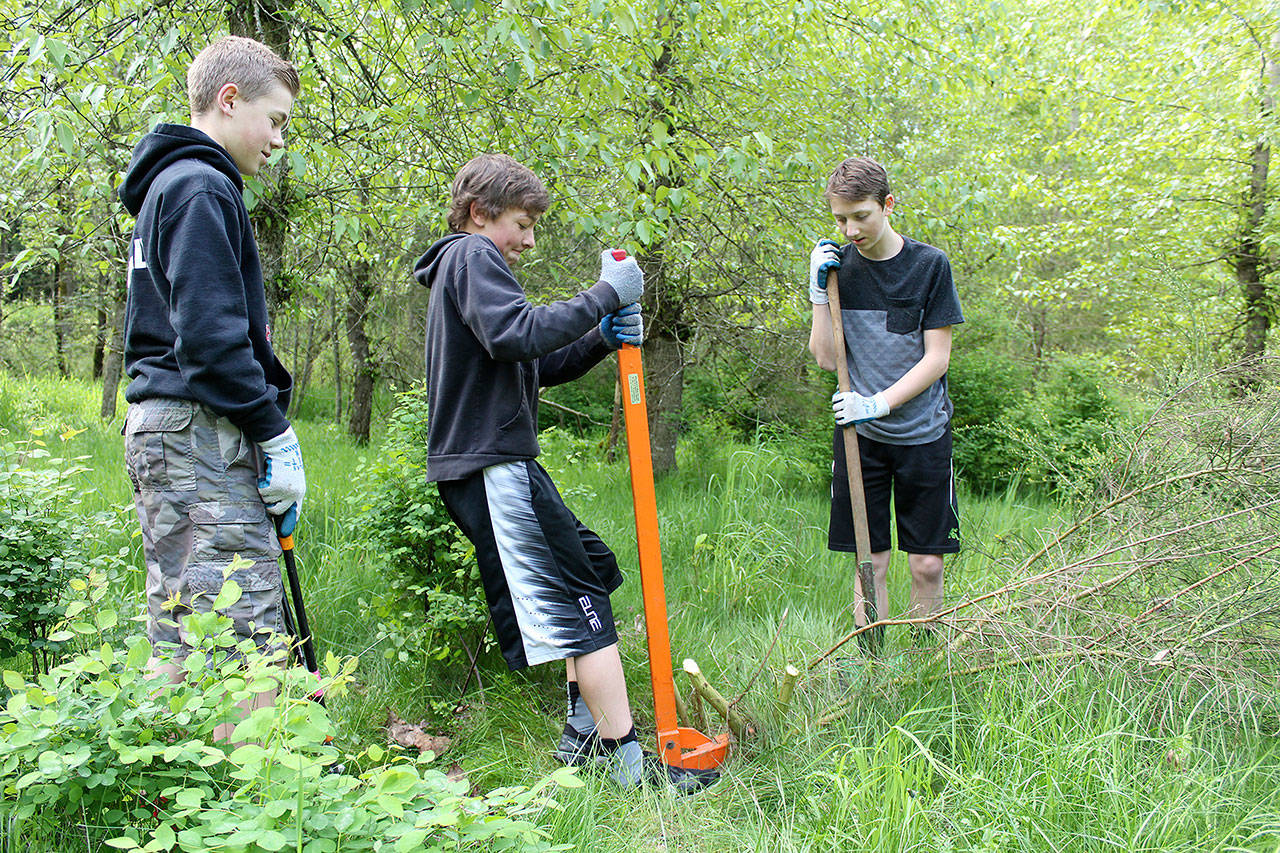On Wednesday May 10, Buckley eighth graders came together to save the environment. Specifically, a section of forest near the White River.
Citizens for a Healthy Bay and the city of Buckley have worked with Glacier Middle School students and teachers since last October to put together a stewardship project to clean up garbage and unauthorized campsites in the forest area right across the White River flume.
“The long term vision is the development of a public park with a half-mile loop trail, interpretive signage, and a scenic area for outdoor recreation and relaxation,” said Joe Frame, a seventh grade science, history and social studies teacher at Glacier.
The project involves 260 students who are divided into smaller groups, each group working two hours — one group in the morning and one in the afternoon — to remove invasive plant species, clean up unauthorized camp sites and collect litter.
The project won’t be finished this year, and will be continued next year by another batch of eighth graders.
“We’re hoping to create a stewardship class after this to maintain the trail,” said Jeanine Riss, CHB’s habitat restoration manager. The trail would also include informational signs designed by students involved in Glacier’s art classes.
This isn’t the middle school’s first venture into local environmentalism, and the students are learning about science in a way that helps their community.
Before restoring the forest area, students learned about water pollution and had hands-on lessons to test the water quality and look for micro-plastics in the White River.
The students also raised and released salmon into the river.
According to Amy Birklid, an eighth grade teacher at Glacier, the students have been working on argumentative essays on how to replace Mud Mountain Dam with a better alternative since “200,000 salmon get killed every year” during transport.
Ryan Cruz of CHB was also a part of the cleaning crew and has been working for year and a half growing the program with the school.
“This isn’t about saving the owls and the trees, it’s about saving people — we’re trying to keep things relevant,” Cruz said, talking about the importance of teaching the next generation about environmentalism. “It’s very hard to change the minds of adults.”


